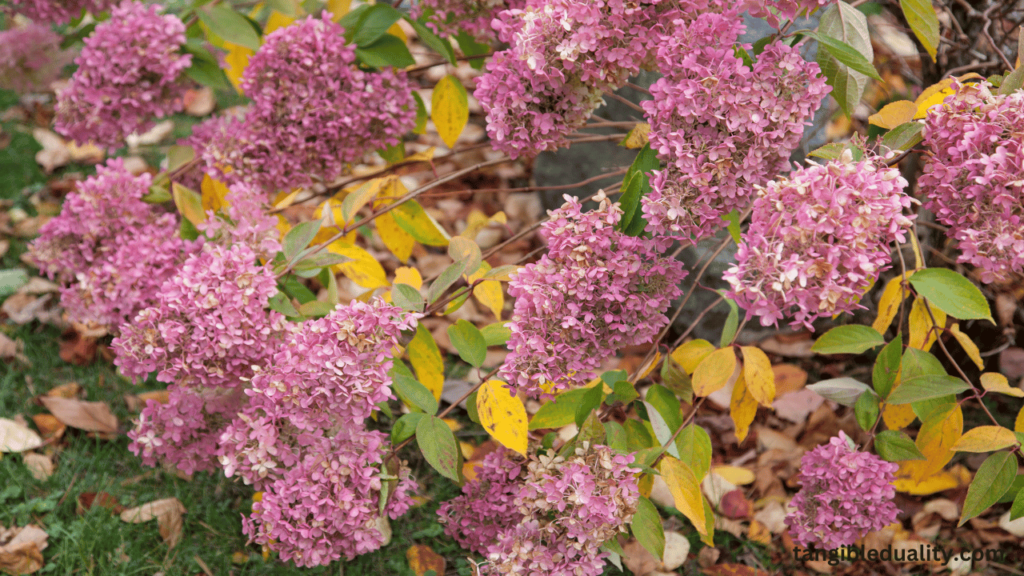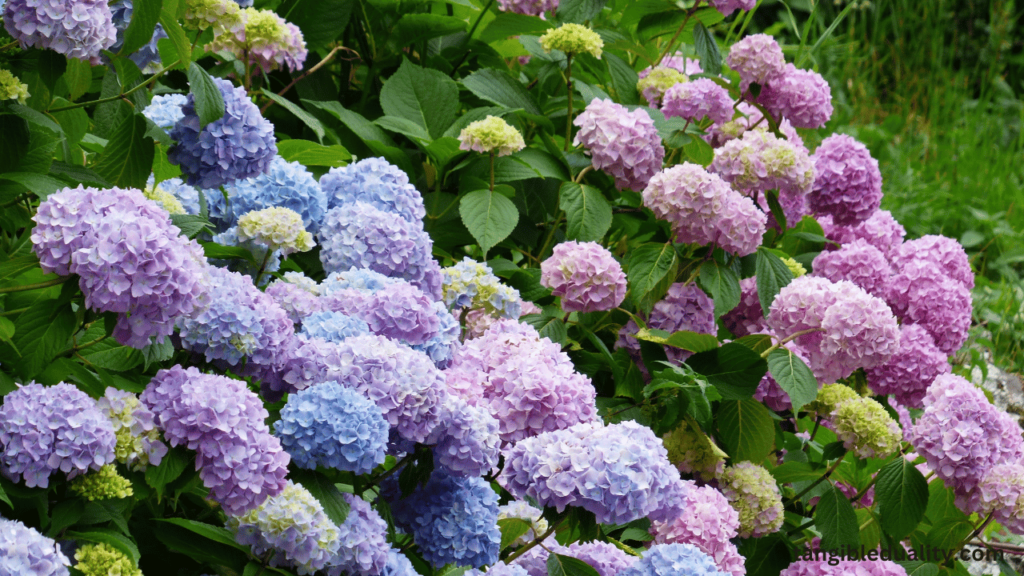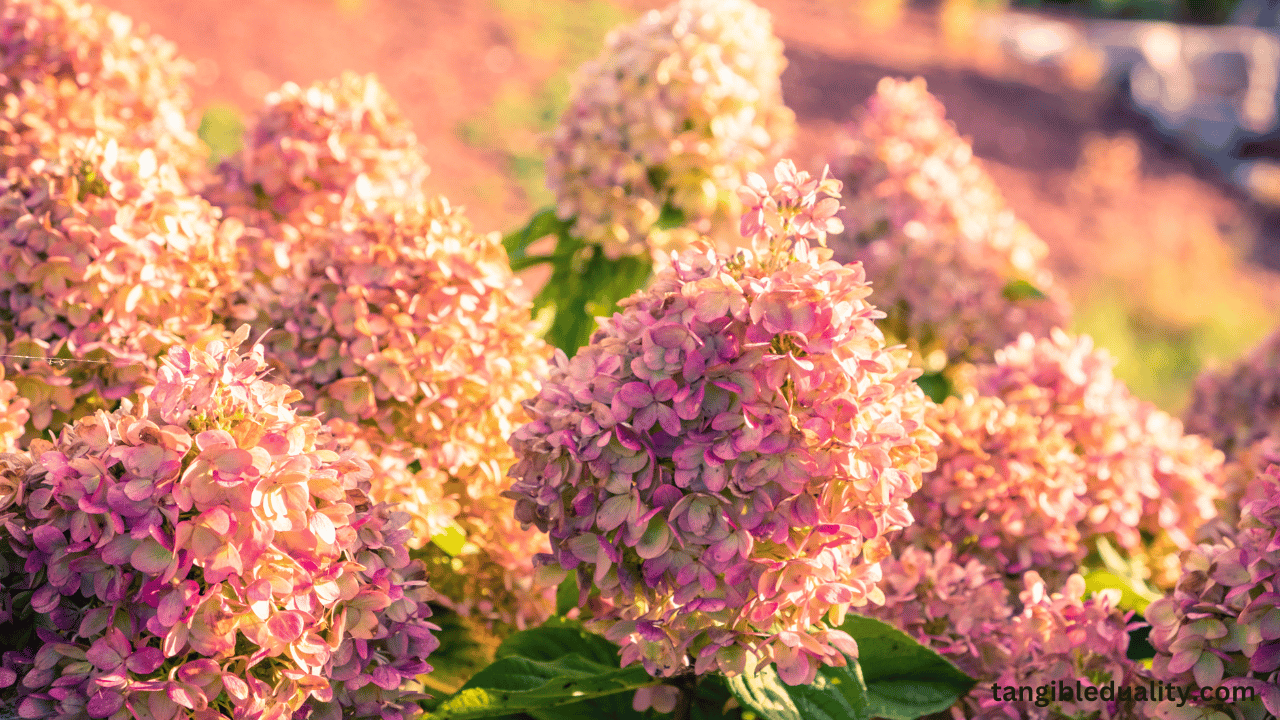As the beautiful colors of autumn begin to fade and the temperature begins to chill, gardeners should begin thinking about fall hydrangea care. Hydrangeas are a popular choice for fall landscaping.
However, when the seasons change, these lovely flowering plants require special attention to maintain their vibrant appearance and offer a splash of color to any garden. In the following paragraphs, we will discuss the most effective methods for pruning and rescuing your hydrangeas so that they can flourish and blossom once more during the next gardening season.
Hydrangeas are a well-liked option for gardens because of their enormous, beautiful blooms and their ability to survive the entire summer. However, a lack of sufficient maintenance can reduce the number of flowers produced in the future.
Follow the advice of professionals regarding the trimming and preservation of your hydrangeas. You can make sure that these plants will continue to be beautiful and healthy for many years to come.
Understanding the unique requirements that hydrangeas have during the fall is essential, whether you are an experienced gardener or just starting out. There are many things to consider in order to properly care for these sensitive plants.
Such as selecting the appropriate equipment for pruning and ensuring that they are adequately protected from frost. Get ready to learn how to properly care for your hydrangeas this fall by grabbing your gardening gloves and getting ready to learn something new.
Hydrangeas are beloved for their beautiful blooms and easy care, but proper maintenance is key to ensuring they thrive throughout the year. Fall is a crucial season for hydrangea care, as it sets the stage for next year’s flower production.
In this guide, we’ll delve into the essential factors for caring for your hydrangeas in the fall, including pruning techniques, bloom cycles, and specific strategies for different hydrangea types.

How to Care for Hydrangeas in the Fall
Understanding the Needs of Hydrangeas During the Fall Season
During the fall, hydrangeas undergo critical changes in growth and prepare for the winter ahead. It’s essential to provide adequate water and nutrients to support their transition into dormancy. Be attentive to signs of stress, such as wilting or yellowing leaves, which may indicate a need for additional care.
Factors to Consider When Pruning Hydrangeas in the Fall
Pruning hydrangeas in the fall requires a delicate balance between shaping the plant for aesthetics and promoting healthy growth. Identify old wood for removal to encourage new growth and future blooms. Dead or damaged branches should be trimmed back to maintain plant vigor and prevent disease spread.
Tips for Maintaining Hydrangea Bushes in the Fall
A layer of mulch in the fall provides insulation and protects the roots of hydrangea bushes from temperature fluctuations. Regularly check for pests or diseases that may affect plant health. Adjust watering frequency as the season changes to prevent waterlogging of the soil.
Pruning Hydrangeas in the Fall: Best Practices
Identifying Old Growth vs. New Wood for Pruning
Knowing the difference between old wood that has already flowered and new growth that will bloom next season is crucial for effective pruning. Focus on removing spent flower heads and cutting back excessive growth to maintain a balanced plant structure.
Methods for Pruning Hydrangeas to Encourage Blooming
Pruning techniques differ based on the type of hydrangea you have, as some bloom on old wood while others on new wood. Cut back summer blooming hydrangeas in early fall to stimulate next year’s flower buds. Avoid excessive pruning of varieties that bloom on old wood to preserve their blooming potential.
How to Safely Prune Hydrangeas Back in the Fall
When pruning hydrangeas back in the fall, use sharp, clean tools to make precise cuts. Remove any crossing or overcrowded branches to improve air circulation and sunlight exposure. Consider the desired shape and size of the plant before making drastic pruning decisions.
Understanding Hydrangea Bloom Cycles in the Fall
Effects of Fall Care on Hydrangea Bloom Quality
The care you provide to your hydrangeas in the fall directly impacts the quality and quantity of blooms you can expect in the coming year. Proper pruning and fertilization will result in vibrant, healthy flower heads that enhance your garden’s beauty.
Blooming Patterns of Hydrangeas on Old Wood vs. New Wood
Hydrangeas that bloom on old wood require a different approach to pruning compared to those that bloom on new growth. Understanding the blooming patterns of your specific hydrangea type will guide you in maintaining optimal flower production and plant health.
Maximizing Flower Production Through Proper Fall Care
By providing the necessary care in the fall, you set the stage for abundant flower production in the upcoming growing season. Maintain a healthy balance of nutrients, water, and sunlight to ensure your hydrangeas develop potent flower buds that will bloom beautifully the next summer.

Dealing with Hydrangea Flowers in the Fall
Tips for Supporting Hydrangea Flowers During Late Summer/Fall
As the late summer transitions into fall, it’s essential to support your hydrangea flowers to prolong their beauty. Stake taller varieties to prevent them from bending or breaking under the weight of the flower heads. Regular deadheading of spent blooms will encourage new growth and extend the flowering season.
Practical Steps for Cutting Back or Deadheading Hydrangea Flowers
Remove faded or dead flowers by cutting the stems just above a healthy set of leaves or buds. Deadheading redirects the plant’s energy towards new growth and prevents the formation of seeds, promoting continuous blooming. Clean your pruning tools between cuts to prevent the spread of diseases.
Fall Fertilization Techniques to Enhance Hydrangea Flower Buds
Apply a balanced fertilizer in the fall to provide essential nutrients for the development of flower buds. Choose a formula specifically designed for blooming plants to support the growth of healthy blooms. Avoid excessive nitrogen, as it can promote foliage growth at the expense of flower production.
Types of Hydrangeas and Their Fall Pruning Needs
Differences in Pruning Smooth vs. Oakleaf Hydrangeas in the Fall
Smooth hydrangeas bloom on new wood and can be pruned back more aggressively in the fall to shape the plant and encourage new growth. Oakleaf hydrangeas, which bloom on old wood, require minimal pruning to preserve their blooming potential for the next season.
Identifying Bloomers that Bloom on Old Wood vs. New Wood
Understanding whether your hydrangea blooms on old or new wood informs your pruning strategy and ensures you don’t inadvertently remove next year’s flower buds. Take note of your hydrangea’s bloom cycle to tailor your care practices accordingly.
Adapting Pruning Techniques Based on the Type of Hydrangea Shrub
Each type of hydrangea has specific pruning requirements based on its blooming habits and growth patterns. Consult gardening resources or experts to determine the best approach for pruning your particular hydrangea variety. Tailoring your care to the unique needs of your shrub will result in healthier plants and more prolific blooms.
Conclusion
It is essential to supply fall hydrangeas with the right care and maintenance to ensure that they remain healthy and vibrant throughout the growing season. When carried out in the appropriate manner, techniques such as pruning and salvage can stimulate new growth and improve the overall appearance of the plants.
This is because these techniques can salvage and prune. Professional guidance strongly emphasizes the relevance of timing, tools, and techniques to achieve the most outstanding potential results while inflicting the hydrangeas with the least amount of stress possible.
Gardeners who follow these guidelines and remain vigilant regarding the specific requirements of each plant will enjoy vibrant, healthy hydrangeas throughout the fall season and beyond.
FAQs
Q: When should I prune my fall hydrangeas?
A: Fall is the best time to prune your fall hydrangeas, as they bloom on old wood.
Q: How should I prune my mophead hydrangeas in the fall?
A: For mophead hydrangeas, it’s best to cut them back in late fall or early winter after they have finished blooming.
Q: Do I need to prune my panicle hydrangeas in the fall?
A: Panicle hydrangeas don’t need to be pruned in the fall. You can wait until late winter or early spring to prune them back.
Q: Can I prune my hydrangeas in late summer or early fall?
A: It’s best to avoid pruning your hydrangeas in late summer or early fall, as you may be cutting off next season’s flowers.
Q: How can I salvage my fall blooming hydrangeas?
A: If your fall blooming hydrangeas have old blooms, you can prune them in late fall to encourage new growth.
Q: What should I do with the fall foliage on my hydrangeas?
A: You can leave the fall foliage on your hydrangeas as it can help protect the buds for next year’s blooms.
Q: Is fall fertilization important for hydrangeas?
A: Yes, fall fertilization can help give your hydrangeas the nutrients they need to thrive when it comes to fall and prepare them for the next blooming season.

